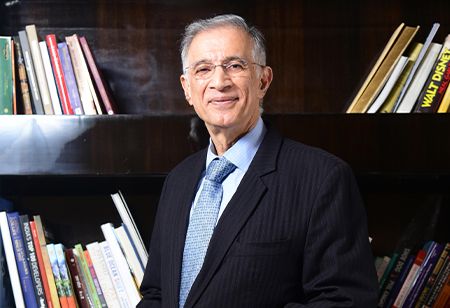
Urban India is at an inflection point. As aspirations rise, urbanization in India accelerates, and integrated townships becomes the new norm, township development has transcended conventional real estate. At the heart of this evolution lies a triad: the infusion of smart technologies, the agility to navigate dynamic urban policy frameworks, and above all, a vision rooted in community, sustainability, and resilience. At Hiranandani, we view master planning not just as the architecture of cities but as the science of creating self-sustaining, future-ready habitats that enrich lives for generations to come.
The Roadblocks of Masterplanning
Executing township-scale developments in India involves navigating a labyrinth of land acquisition, fragmented governance, and infrastructure deficits. Overlapping jurisdictions, prolonged approvals, and escalating construction costs in India add layers of complexity. Yet, these challenges underscore the need to move beyond transactional development. We believe the answer lies in creating integrated value, delivering not just square feet of space but quality of life. Smart city projects such as Amaravati, envisioned as Andhra Pradesh’s Greenfield capital, though faced with political setbacks, embody the magnitude and potential of large-scale master planning.
Masterplans & Missions
Urban development in India is deeply intertwined with evolving regulations, ranging from environmental clearances and green certifications to transit-oriented development and affordable housing mandates. While these are progressive and necessary, they require developers to remain agile and deeply informed. The challenge lies in uniformity; different states and localities interpret policies differently. Global models such as Copenhagen’s green belt policy and Melbourne’s urban growth boundaries offer instructive insights into how policy can shape balanced urban expansion, lessons increasingly relevant to Indian cities seeking to curb sprawl and preserve ecology.
The Liveability Equation
As cities get denser, liveability must not be compromised. Our approach at Hiranandani projects equal emphasis on vertical zoning and horizontal accessibility. By allocating lower levels to green lungs, recreation zones, and retail, while layering residences and workplaces above, we create seamless, multi-functional environments. Walk-to-work concepts, wide tree-lined boulevards, integrated schools, and health centers ensure a compact yet complete living environment. Hiranandani Gardens in Powai stands as a testament to this philosophy. Singapore’s Punggol Digital District offers similar lessons, harmoniously integrating housing, education, and innovation within a compact, thoughtfully zoned precinct.
Digital DNA of Townships
In the modern township, smart technology in real estate is no longer an afterthought; it is embedded in the blueprint itself. From energy-efficient building systems and IoT-enabled utilities to GIS-based urban planning and sensor-driven waste management, digital infrastructure is silently orchestrating the township’s daily rhythm.
Infrastructure with Identity
Infrastructure is more than roads and utilities; social infrastructure, like community clubs, learning centers, and parks, serves as anchors of collective identity. Projects such as Nirvana Park in Powai or the Global Education Campus in Panvel have transcended functionality to become symbols of community pride. Globally, initiatives like Barcelona’s Superblocks or Portland’s pedestrian plazas demonstrate how public realm transformation can foster social cohesion and inclusivity.
Future-Proofing Urban Life
True sustainability and sustainable development lies not just in green ratings but in long-term adaptability. Our master plans consider climate responsiveness, modularity, and demographic flexibility from the outset. Whether through rainwater harvesting, thermal-efficient materials, or disaster-resilient infrastructure, these elements are not superficial; they are foundational. At Hiranandani Communities, resilience is designed into the DNA of each project. It’s how we future-proof our developments, preparing them for evolving climate conditions, shifting mobility trends, and changing societal needs.
Blueprints for the Next Era
The next evolution of township development lies in hyper-personalization, sustainable mobility, and human-centric digital ecosystems. As we move toward EV-first planning, drone logistics, and 15-minute city concepts, the blueprint is shifting toward proximity, autonomy, and seamless urban experience. Paris’s 15-minute city is designed as a living laboratory for smart, connected urban life. These case studies offer a glimpse of what lies ahead for India’s cities. Township development is a responsibility and a privilege to shape the canvas on which people live, learn, connect, and grow. The future of India’s urban story will not be written in isolated skyscrapers but in thoughtfully masterplanned ecosystems, where every square meter contributes to a greater whole.
About the author: Dr. Niranjan Hiranandani, Co-Founder & Managing Director of Hiranandani Groups, one of the top leaders in the industry. With years of experience and visionary leadership, Niranjan effectively assists in shaping the nation’s urban topography. His projects showcase sustainability excellence and vibrant cultural community forums
We use cookies to ensure you get the best experience on our website. Read more...
Copyright © 2025 HomesIndiaMagazine. All Rights Reserved.